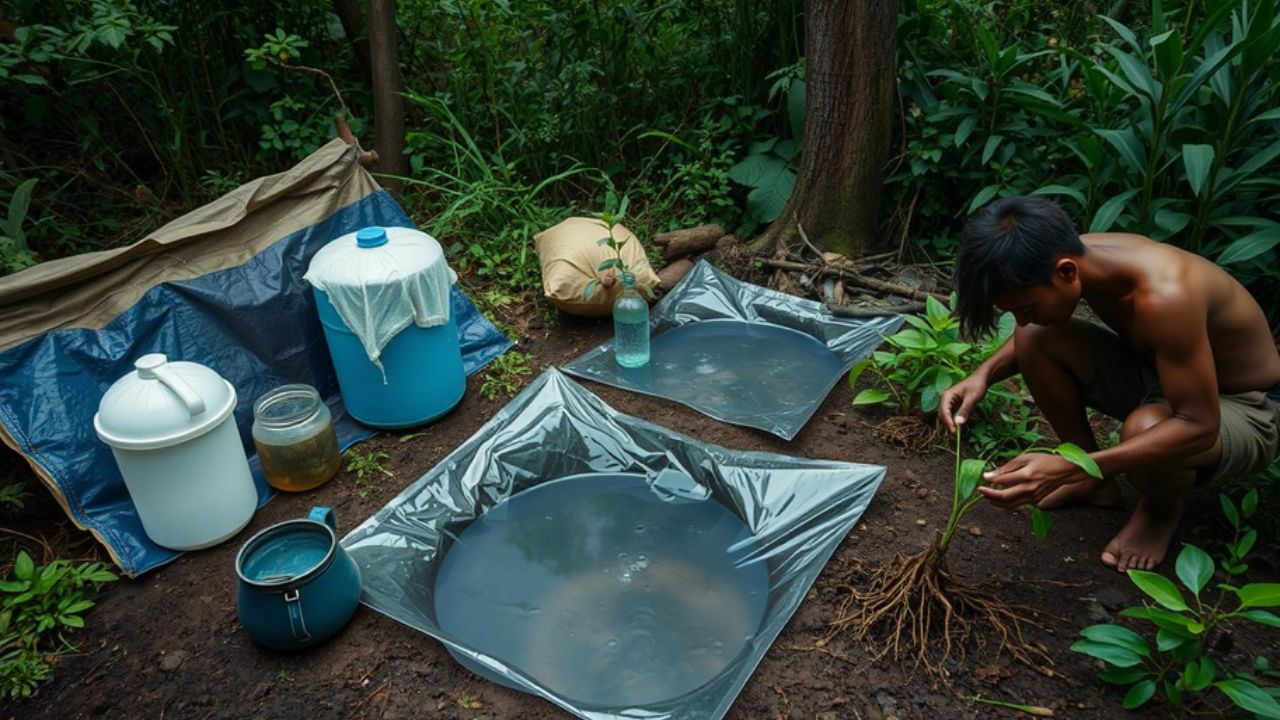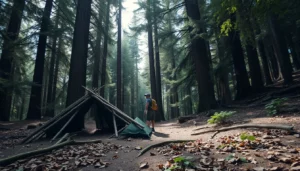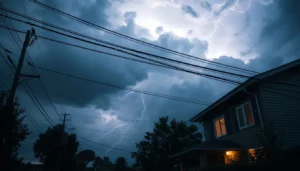Today’s post will teach you how to survive without running water.
The sudden silence of a dry faucet marks the beginning of a household crisis most people aren’t ready to face.
While brief water outages are common enough, extended disruptions from natural disasters, infrastructure failures, or system contamination can transform our comfortable homes into survival challenges within hours.
Modern life has made us dangerously dependent on running water.
Every daily routine from basic hygiene to meal preparation requires this resource we barely think about until it’s gone.
Yet few households have real plans or knowledge for managing life when the taps run dry.
How to Survive Without Running Water Quick Guide:
Your survival strategy should focus on securing alternative water sources like rainwater or natural bodies of water, while maintaining proper purification methods such as boiling, chemical treatments, or filtration systems to ensure safety.
Managing daily tasks demands significant adjustments - from using disposable items in the kitchen to adopting waterless hygiene practices with wet wipes and hand sanitizers, while implementing greywater recycling and strict conservation methods for essential activities.
A well-stocked emergency kit with water containers, purification tools, and hygiene supplies serves as your foundation for handling extended outages.
Success hinges on smart water management, where every drop is collected, purified, used, and often reused before disposal.
While this guide provides essential basics for water emergencies, creating true water independence requires a more comprehensive approach.
The Water Freedom System takes you beyond basic preparation, showing you how to build a sustainable home water supply that works in any climate.
Learn the exact steps to create your own reliable water source that can sustain your household through any disruption – from brief outages to extended droughts.
Ready to secure your family’s water future? Access the complete system via the link below.
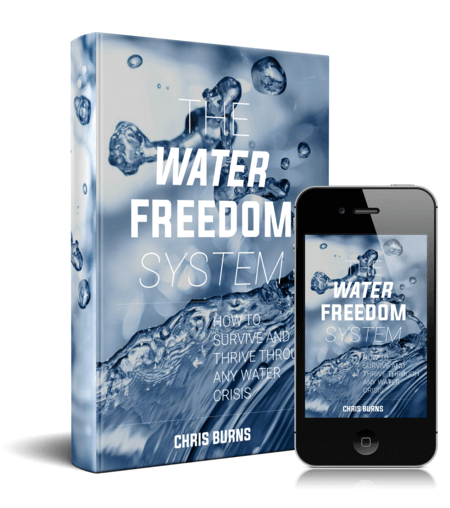
Create Your Own Water Supply!
EXCLUSIVE step-by-step guide showing you EXACTLY how to create your own “home oasis” TODAY and how to survive any tough century long drought!
The Challenges of Living Without Running Water
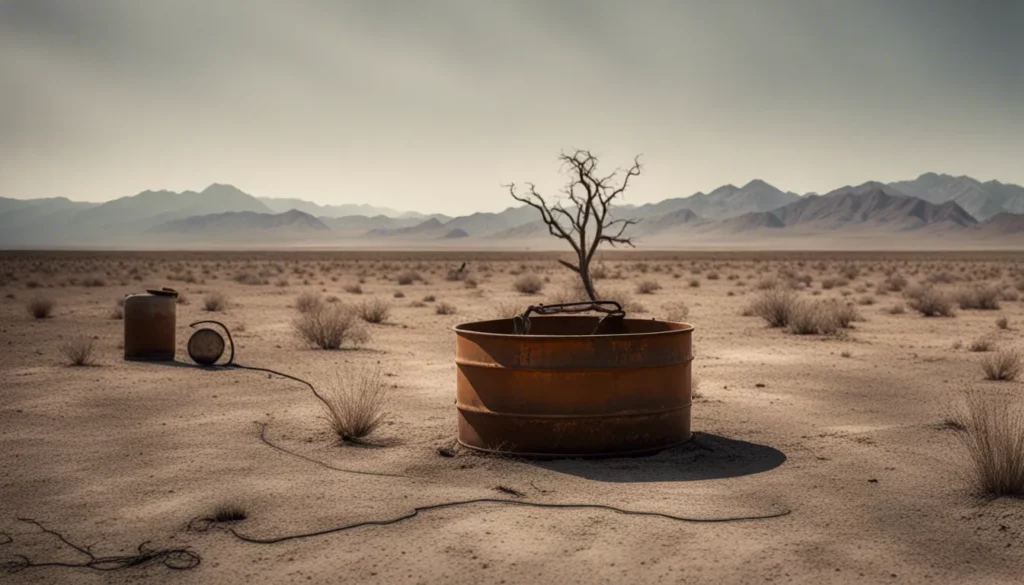
Living without running water creates daily challenges that are hard to imagine if you’re used to the convenience of a faucet.
One of the toughest parts is securing enough safe drinking water.
Without a steady supply, staying hydrated becomes an ongoing concern, and dehydration can creep up quickly if you’re not careful.
When there’s no running water, even basic hygiene like washing your hands becomes complicated, raising the risk of illness.
Cleaning living spaces is equally difficult, and it’s not just about appearances; keeping surfaces clean is essential for preventing bacteria and other pathogens from spreading, especially in close quarters.
Household chores take on new meaning, too.
Tasks like washing dishes or laundry aren’t just tedious; they’re physically demanding.
You have to collect water, carry it, and store it safely to make sure it’s available when needed.
This constant cycle of fetching, rationing, and purifying adds hours to the day and a considerable amount of mental strain, especially in a crisis.
How to Survive Without Running Water: Key Strategies and Methods
Surviving without running water demands practical solutions and a good deal of resourcefulness.
Here’s how to tackle this challenge with some reliable strategies:
Finding Alternative Water Sources and Collection Methods
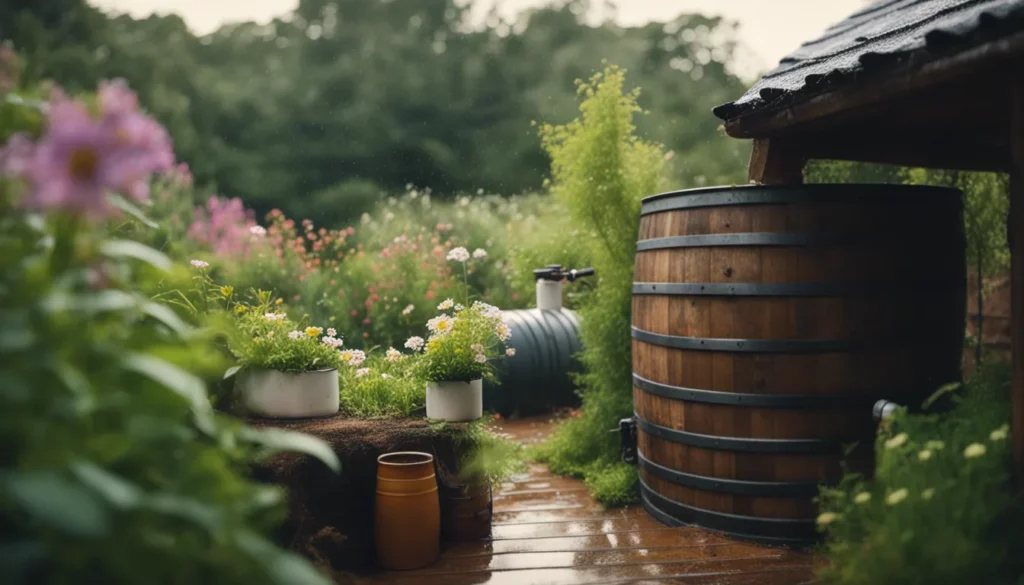
The most accessible option in many situations is collecting rainwater.
Setting up a simple rainwater harvesting system isn’t as complicated as it sounds.
If your home has gutters, you can guide them to a large barrel or tank to capture rain runoff.
Even something as straightforward as positioning tarps to direct rainwater into containers can be effective, especially during heavy rain.
Just remember to cover your storage containers to keep them free of debris and insects.
In winter or colder climates, snow can be another valuable water source, though it’s important to melt and purify it thoroughly before use.
A metal container can double as both a storage and heating vessel, allowing you to melt snow over a heat source safely.
Remember that snow, when melted, provides only a fraction of the volume of liquid water, so you may need to collect a significant amount to meet your needs.
If you’re near natural sources like ponds, rivers, or streams, these can be lifesavers, but they require extra caution.
While they may look clean, natural water sources often contain bacteria, parasites, and other contaminants that could lead to serious illness.
Filtering and purifying this water is non-negotiable, especially if you plan to use it for drinking or cooking.
A combination of methods — such as filtering out debris, boiling, and treating with purification tablets — will ensure you have a clean, safe supply.
Water Purification and Treatment Methods
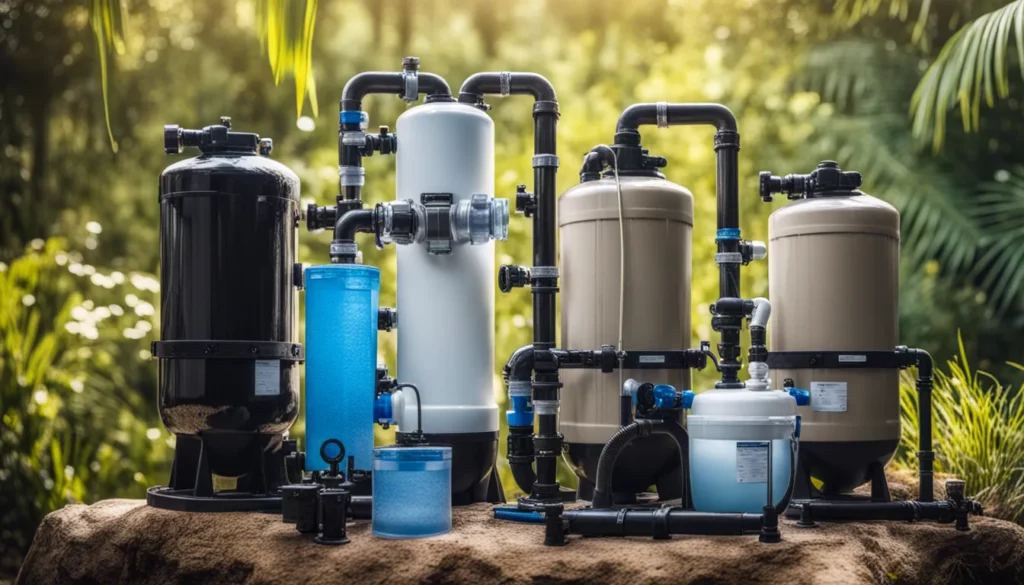
Without reliable running water, knowing how to purify water is key. Let’s look at some top ways to make sure your water is safe:
- Boiling remains one of the simplest and most effective ways to purify water. Bringing water to a rolling boil kills most harmful bacteria, viruses, and parasites. Although boiling does consume fuel or energy, it’s one of the best options in a pinch, especially if you’re near a heat source like a campfire or stove.
- For a quick alternative, chemical treatments such as using iodine or chlorine tablets can be effective for treating water in smaller quantities. These are lightweight and portable, making them a good choice for emergency kits. Just remember that they may slightly alter the taste of the water, so it’s good to be prepared for that if you’re using them for an extended period.
- If you’re looking for a more long-term or versatile solution, investing in a high-quality water filter is worth it. Brands like Berkey or Katadyn offer filtration systems that can handle larger volumes of water and effectively remove bacteria, parasites, and other impurities. Portable options, like pump filters and straw-style filters, are convenient for those on the move or for situations where you can only carry a limited amount of clean water.
- For a low-tech, eco-friendly approach, solar disinfection (often called SODIS) can work in a pinch. All it takes is a clear plastic bottle filled with water and several hours of strong sunlight. The UV rays in sunlight can kill many harmful pathogens when given enough exposure. However, this method works best in sunny climates and may take longer on overcast days.
Regularly testing water, even after purification, is a smart habit to ensure ongoing safety.
Test kits designed for household use are readily available, providing peace of mind that your water is genuinely safe to consume.
Maintaining Personal Hygiene Without Running Water

Create Your Own Water Supply!
EXCLUSIVE step-by-step guide showing you EXACTLY how to create your own “home oasis” TODAY and how to survive any tough century long drought!
Wet wipes and hand sanitizers become essentials in this scenario.
While typically compact, they’re remarkably effective at removing dirt and bacteria from hands and skin.
Antibacterial wipes work well for quick, all-over body cleans when a full wash isn’t possible, while hand sanitizer is particularly useful for maintaining hand hygiene, which is critical in preventing the spread of germs.
Keeping a stock of these supplies can make a significant difference in an emergency.
For times when you do have a small amount of water available, a sponge bath can provide a refreshing and thorough cleanse. Here’s how to do a sponge bath:
- Heat a small bowl of water
- Add a drop of soap
- And use a washcloth or sponge to clean yourself, focusing on areas that accumulate sweat or bacteria
This method is efficient and minimizes water usage.
If you have access to outdoor space, solar or camping showers are a great option, especially in warmer weather. These portable showers can hold a few gallons of water, which can be warmed by the sun, providing a more comfortable wash.
For hair care, waterless or dry shampoo is a lifesaver, as it helps absorb oils and keeps hair feeling fresh.
It’s an ideal solution to stretch the time between washes and is readily available in both spray and powder forms.
If dry shampoo isn’t accessible, a little cornstarch or baby powder can work as a substitute to reduce greasiness.
While these methods can handle the essentials, hygiene during water scarcity goes beyond personal cleanliness.
Proper disposal of waste is critical, as failing to manage trash and waste can quickly lead to unsanitary conditions.
Disposable hygiene items such as tissues, paper towels, and sanitary wipes should be properly bagged and discarded to avoid attracting pests.
These no-water hygiene strategies can keep you feeling human even when regular bathing isn’t an option.
Kitchen Management and Dishwashing Alternatives
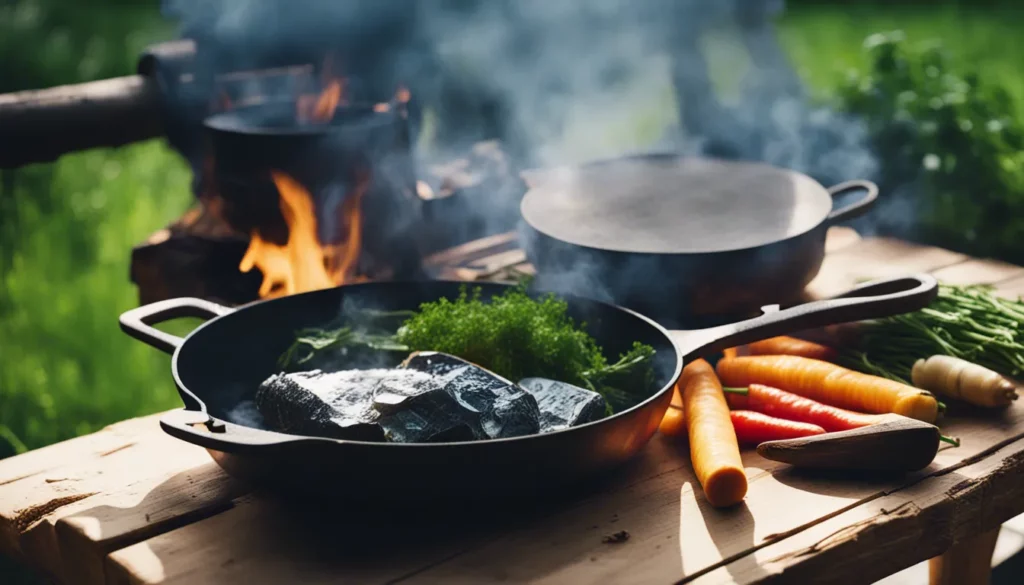
To minimize the need for dishwashing, disposable items like plates, cups, and utensils are helpful.
While they aren’t ideal for long-term use, they can cut down on water usage significantly during emergencies.
When reusable dishes are necessary, a two-basin system can make washing more efficient.
Fill one pan with soapy water for scrubbing and another with clean water for rinsing. This keeps water usage to a minimum.
Heating small amounts of water in an electric kettle or on a portable stove not only makes the washing process easier but also reduces the amount of water you’ll need to use, as hot water helps dissolve grease and food residue faster.
An often overlooked tip is to thoroughly scrape or wipe off any leftover food from dishes before they go into the wash. This little step can make a big difference, especially if you’re using minimal water.
Any remaining rinse water can be saved to water non-edible plants or even used to flush toilets, making it easy to reuse instead of pouring it down the drain.
Meal planning can also be a lifesaver when water is scarce.
Stick to one-pot or oven-based recipes, which reduce the number of dishes to clean up afterward. Even cold meals like sandwiches, salads, and wraps can be filling and require no cooking or washing up.
Laundry Solutions During Water Disruption
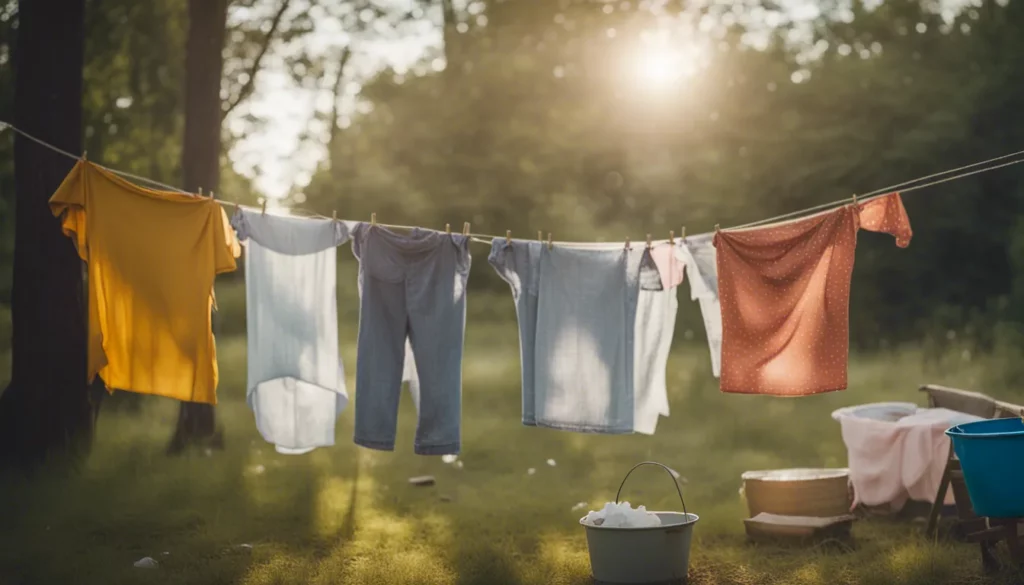
Laundromats can be a lifesaver in these situations, but they’re not always nearby or accessible.
In their absence, simple at-home methods become essential.
Start with a couple of sturdy buckets or tubs; fill one with soapy water and the other with clean water for rinsing.
Opt for biodegradable detergent, which is not only gentle on the environment but also requires less water to rinse out.
To save energy, take time to thoroughly wring out each piece of clothing by hand before hanging it to air-dry.
If you have a drying rack or a clothesline, these can help speed up drying while conserving energy.
In long-term emergencies, you might even consider washing clothes in natural sources like creeks or rivers. Just be sure to use eco-friendly soap that won’t harm local wildlife or pollute the water.
Another simple way to reduce laundry needs is by planning ahead.
If you have a decent stockpile of clean clothes, you can stretch the time between washes, allowing you to save water for essential uses. This approach also keeps the laundry pile manageable, avoiding the stress of dealing with a mountain of clothes when water finally becomes available.
For small stains or odors, a quick cleanup with disinfectant wipes, vinegar, or baking soda can refresh clothes without needing a full wash.
Dry-cleaning kits and waterless “dry cleaning” sprays are also handy alternatives that can remove odors and minor stains, allowing you to stay clean and comfortable while saving your water reserves.
Toilet Operation and Sanitation Practices
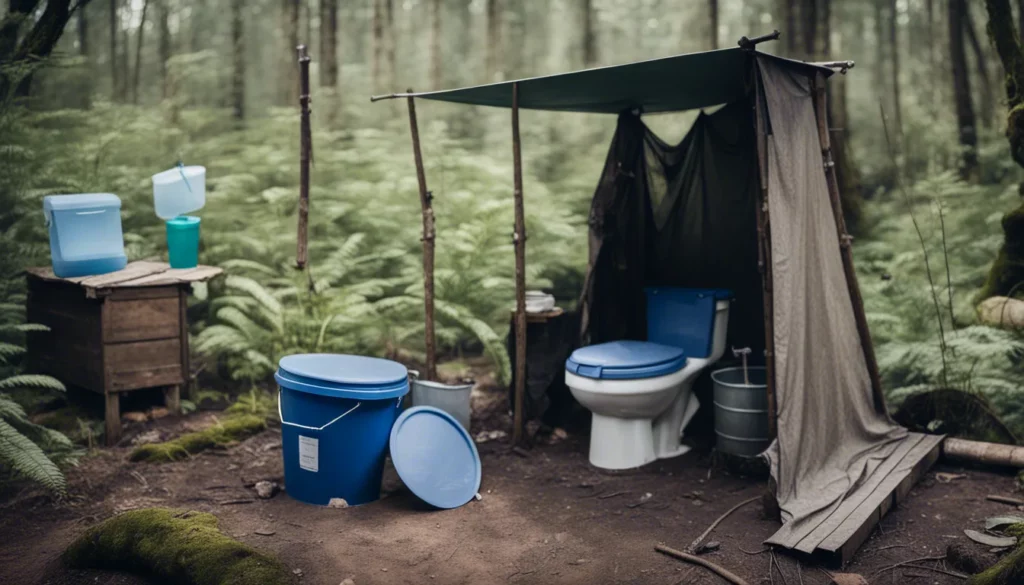
In times when water is scarce, handling toilet needs with care and efficiency becomes essential for both comfort and health.
Start by rethinking your flush routine: conserve water by flushing only when absolutely necessary, and consider using saved or rainwater for this purpose.
Every drop counts when resources are limited.
For situations where flushing simply isn’t an option, homemade solutions can be surprisingly effective.
A DIY emergency toilet can be crafted with a large bucket, sawdust (or kitty litter), and sturdy plastic bags. This setup keeps waste managed without needing water, and the sawdust or litter helps control odor while absorbing moisture.
When using this setup, make sure to tightly seal each bag before disposal to maintain hygiene and reduce unpleasant smells.
Portable camping toilets or hygiene bags can be a great investment for prolonged emergencies.
They’re designed for easy cleanup and don’t require plumbing or water.
Adding a small amount of disinfectant to the waste container can help keep odors down and limit bacteria buildup.
If you find yourself needing to dispose of waste outdoors, following recommended sanitation guidelines is crucial to avoid contaminating local water sources.
It is advisable to dig a “cat hole” 6 inches deep and at least 100 feet away from homes, water sources, or edible plants. This distance is crucial for safety, as it minimizes the risk of spreading bacteria into areas that may be used for drinking or food preparation.
Good sanitation extends beyond the toilet itself. After every bathroom use, thorough handwashing is a non-negotiable step to prevent the spread of germs, especially in close quarters where illnesses can quickly circulate.
A bottle of hand sanitizer can be a quick substitute if running water is unavailable, but whenever possible, use a bit of clean water, soap, and friction to ensure that hands are properly cleaned.
Water Emergency Checkslist
| Essential Item | Purpose |
|---|---|
| 5-gallon jugs and barrels | Water storage and collection |
| Water filters and purification tablets | Making water safe for consumption |
| Manual pumps and buckets | Collecting rainwater and water from natural sources |
| Wet wipes and hand sanitizer | Personal hygiene maintenance |
| Disposable plates and utensils | Reducing need for dishwashing |
| Cleaning supplies (waterless) | Maintaining household sanitation |
| Portable shower system | Basic bathing needs |
| Emergency toilet supplies | Sanitation management |
| Battery/hand-crank radio | Staying informed about emergency updates |
| Cooking tools (minimal water) | Food preparation without running water |
Conclusion
Living without running water tests our adaptability and resourcefulness in ways few other emergencies can.
The key to success lies not just in stockpiling supplies, but in developing a comprehensive strategy that covers water collection, purification, conservation, and reuse.
By mastering the essential skills of water management – from rainwater harvesting to greywater recycling – and maintaining proper hygiene with limited resources, you can keep your household functioning during extended outages.
While the challenges are significant, proper preparation and knowledge of alternative methods can transform what could be a crisis into a manageable situation.
Remember: building these skills and gathering supplies before an emergency strikes is your best defense against water disruptions.
Want to take your water independence to the next level?
Check out the Water Freedom System – a detailed guide that shows you how to create a sustainable water supply right at home.
This resource goes beyond emergency preparation, teaching you how to build and maintain your own water system that can sustain your household through extended droughts or disruptions.
Learn proven techniques for water collection, storage, and purification that work in any climate or setting.
Access the complete guide below to start building your home’s water security today.

Create Your Own Water Supply!
EXCLUSIVE step-by-step guide showing you EXACTLY how to create your own “home oasis” TODAY and how to survive any tough century long drought!

